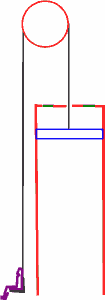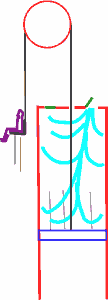
Space Shot
Encyclopedia
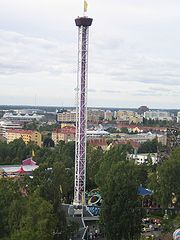
Amusement ride
Amusement rides are large mechanical devices that move people to create enjoyment. They are frequently found at amusement parks, traveling carnivals, and funfairs.-Notable types:*Afterburner*Ali Baba*Balloon Race*Booster...
manufactured by S&S Power
S&S Power
S&S Worldwide is a company known for its pneumatically powered amusement rides and roller coaster designing.-History:S&S Worldwide was founded by Stan Checketts as S&S Sports, Inc. S&S Sports manufactures bungee jumping and trampoline equipment. S&S Sports was sold in 1996...
.
The ride is a drop tower type attraction that uses compressed air
Compressed air
Compressed air is air which is kept under a certain pressure, usually greater than that of the atmosphere. In Europe, 10 percent of all electricity used by industry is used to produce compressed air, amounting to 80 terawatt hours consumption per year....
to rapidly propel riders up the tower then gently lower them with a series of air-cushioned bounces back to the loading platform.
The first space shot to be built in the United States was the Detonator
Detonator (Worlds of Fun)
Detonator made history when it first appeared in the Americana section of Worlds of Fun in Kansas City, Missouri as being the first space shot ride in the United States, as well as the first in the world to have a twin-tower form. Detonator launches riders 160 feet in the air only to fall right...
at Worlds of Fun
Worlds of Fun
Worlds of Fun is an amusement park in Kansas City, Missouri, United States. The park opened in 1973 and was originally built by Lamar Hunt and Jack Steadman . In 1995 Hunt-Midwest sold Worlds of Fun to Cedar Fair Entertainment Co., which currently owns the park...
in Kansas City, Missouri.
Kansas City, Missouri
Kansas City, Missouri is the largest city in the U.S. state of Missouri and is the anchor city of the Kansas City Metropolitan Area, the second largest metropolitan area in Missouri. It encompasses in parts of Jackson, Clay, Cass, and Platte counties...
It was also the first in the world to feature twin-towers.
The tallest space shot in the world is the La Venganza del Enigma in Warner Bros. Movie World Madrid (115m)
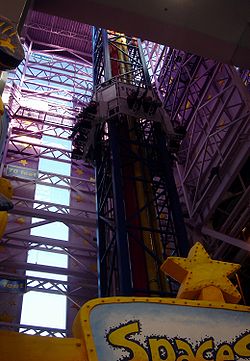
Statistics
- Ride Speed: 60 miles per hour (98 kilometers per hour)
- Capacity: 12 or 16 per tower, depending on seating configuration
- Altogether passenger minimum weight: 222 pounds
- Total passenger maximum weight: 2,500 pounds (1090 kilograms)
- Total passenger minimum height: 48 inches (1.4 meters)
- Ride duration: 50 seconds
- Height: Varies from 90 feet (28 meters) to over 300 feet (92 meters)
- Width: 7 feet 6 inches (2.3 meters)
- Weight (empty): 120,000 pounds 129,000 kilogram)
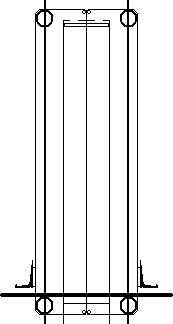
Ride mechanism

In the loading position, the seat carriage is at the base of the tower and the piston is at the top of the pipe column. Once the ride has been loaded, the seats are lifted slightly off the ground and loaded seats are weighed in order to calculate the amount of air pressure needed to safely propel the seats up the tower. Upon charging the air system to the correct pressure, compressed air is injected into the central column pushing the piston rapidly downward. As the piston moves down, it pulls the cable downward over the pulley at the top, propelling the seat carriage up the outside of the tower.
Upon exhausting the air from the pressure system, the carriage descends, drawing the piston back up the pipe column. As the piston moves up, the air inside the pipe column alternately compresses and expands, causing the carriage to bounce several times. With each bounce, a pressure relief valve at the top of the pipe column releases some of the compressed air making each successive bounce smaller until the carriage reaches the loading platform.
Below is a visual representation of the ride cycle:
{| class="wikitable" style="width:60%;"
{|
|valign=top|
